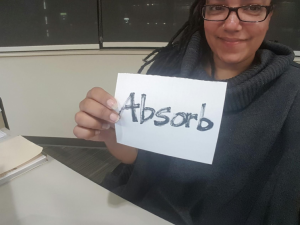Student Perspectives - Susan Laws
As we seek to provide top-notch courses and programs in the online environment, we must remember that the experience of designing and implementing is only half of the equation. On the other side are the students – our partners in education. But we don’t always know much about what online looks like from the student perspective.
So how do we learn more about what happens on the other side of the screen?
We ask!
This month we're talking with Susan Laws, a student in the Information and Learning Technologies program here at CU Denver.
Would you share a bit about what led you to the ILT program at CU Denver?
A few years ago, I was looking for a graduate program to complete while working full time at CU Denver. I knew that it would have to be 100% online in order to accommodate my schedule. I have a background in teaching, so I began by exploring graduate degrees in the School of Education.
I wanted to maintain a connection to teaching and learning even though I no longer taught in the classroom, and the Master’s in Information and Learning Technologies was a perfect fit for me. The program combines curriculum and instruction, learning theory, and instructional design principles to provide a useful foundation for educators, educational technologists, instructional designers, and course developers.
Tell us about your academic experience. Has it lived up to your expectations?
I had no idea what to expect in my online courses! I knew how to navigate the in-person classroom experience, but I didn't fully grasp how being a student translates in a fully online environment.
I've learned that what we might assume are barriers to learning don't have to be! Even if you never meet your classmates, you can still hear their voices and learn their stories. Regardless of the distance between you and your instructor, you can still attend office hours.
Throughout my time in the ILT program my courses have been fun, interesting, challenging, and have provided opportunities to develop new skills in a supportive environment. I have even met some of my classmates in person and now count them as friends and colleagues.
What has been difficult about being an online student?
Sometimes online learning can feel isolating and a bit like you are on your own because you can’t immediately connect like you do in a physical space. Even with the distance, however, there are many ways to communicate with both the instructor and classmates.
When I first started taking classes online four years ago, using tools like Canvas and Zoom was so strange and unfamiliar that I didn't know how I would get used to depending on a computer-mediated presence as a stand-in for my own presence. But online learning isn't just about the tools. It's also a community of people, all with their own identities, strengths, interests, and expectations. My challenge has been understanding my classmates without the benefit of the immediacy that comes with physical proximity.
What instructional strategies have worked really well for you? In other words, what would you suggest to faculty who teach online?
The courses in our program provide many opportunities for group work, project-based assessment, and peer review. The instructors that teach in ILT are dedicated to the goal of training us to be effective and compassionate online educators with a commitment to equitable practice. Faculty guide the online learning experience, even from a distance.
I would encourage anyone who is teaching online to incorporate virtual class meetings as a part of the course experience. Scheduled video meetings are helpful to clarify material, as well as to establish the social and relational aspects of learning in a community. Regular meetings also provide what most faculty and students feel is missing from the online learning experience: face-to-face connection.








Add new comment